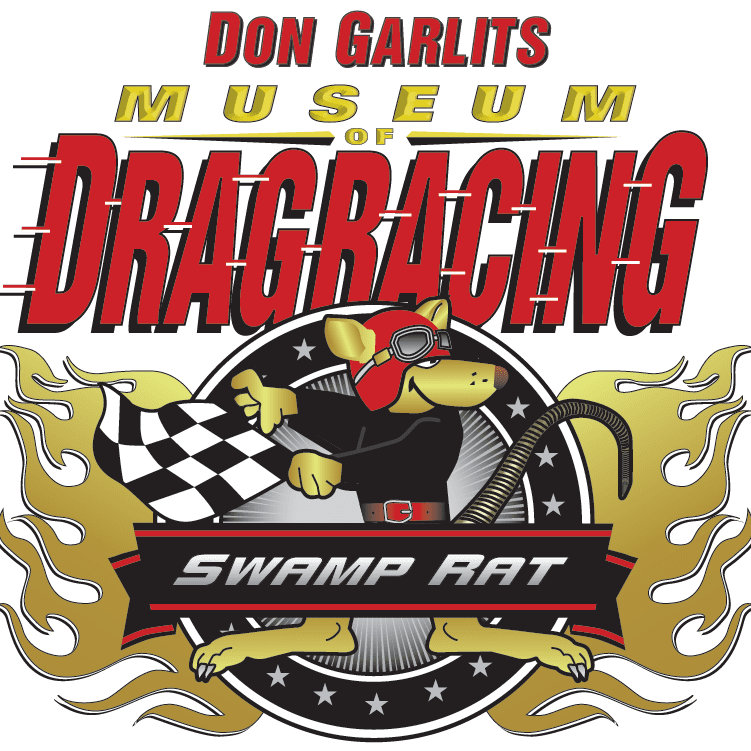2022
Thursday March 10, 2022 Hilton University of Florida Conference Center,
Gainesville Florida.
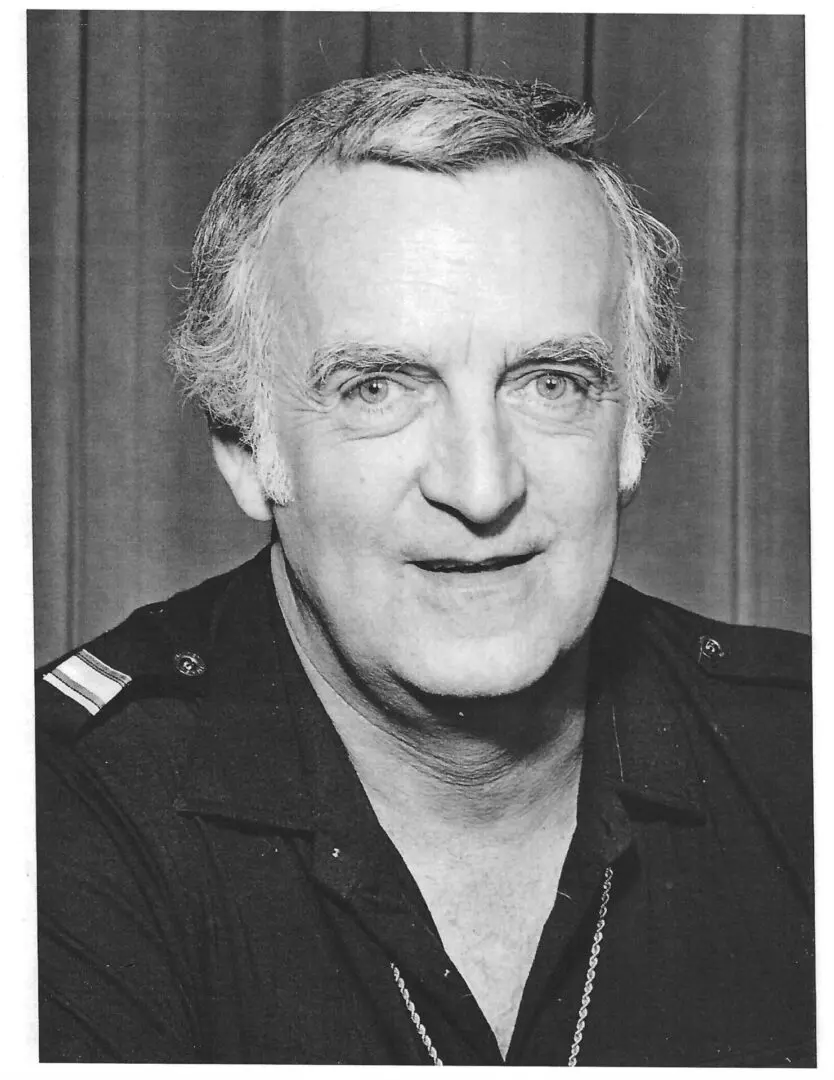
Don Smith
Don Smith is a man driven by multiple interests but with one common denominator, to succeed in each of them. In High School he was a Student Body Officer carried this honor into college as well. When he was 13 he waw member of the cast in the play, Johnny Appleseed playing at the famous Bohemian Grove in San Francisco. After graduating from college, Don played semi-pro baseball and was offered a contract from the Brooklyn Dodgers to play in its rookie league. Instead Don enlisted int the Navy Reserve where he was called into active duty and served his country for four years before receiving a honorable discharge.
However, in addition to these actives Don was also a car nut. Still in High School, when he was 17 he bought his first car, a 1938 flathead V-8 powered Ford Coupe that saw some street racing miles and two years later he bought a 1956 Chevrolet Bel Air sedan with its new V-8 powered engine which quickly found its way to the drag strip. Don was not content to just own and race these cars at the track, in 1958 Don became a partner in the famous Champion Speed Shop out of South San Francisco, California. Still not enough, another of his prime 1958 projects was a full partnership in the Half Moon Bay Drag Strip.
Not content to just be a spectator, in 1959 at the wheel of the Champion Speed Shop AA/Fuel dragster, Don was among the first Northern Californians to break the 180 MPH barrier. In addition to driving the Fuel dragster, in 1962 Don was one of the three members of the Chevrolet Sponsored 409 Super Stock team. With other team members, Don Nicolson and Hayden Profit, this was one of the most successful of Chevrolets drag racing efforts at that time.
In 1963, Don took over complete ownership of the Champion Speed Shop and built it into one of the more prominent speed shops in the nation. In 1970 he sold Champion Speed Shop but the year before closing the sale, he had already opened the doors of High Performance Distributors (HPD), a wholesale distribution center. In 2004 Don repositioned HPD into DCS Consulting & Export, a prime import/export network shop within the performance industry, which he still heads up today.
In addition to his participation as a total enthusiast, participant and promoter of racing and speed equipment, Don has also served on several Specialty Equipment Marketing Association (SEMA) committees and served 14 years as a member of the SEMA Board of Directors to help promote the total industry.
To add to these accomplishments, Don was also founder/owner of San Francisco areas famous award-winning Guido’s Restaurant and winner of the Baccarat World Championship in 1992.
Don has also garnered a few industry/sport awards over the years as noted below:
NHRA’s Outstanding Contribution to Drag Racing
SEMA Hall of Fame member
SEMA person of the year
SEMA Distributor of the Year
SEMA Women’s Association Athena Person of the Year
SEMA Ambassador Award
Performance Warehouse Association (PWA) Founder
PWA Director Emeritus
PWA Chairman of the Board two terms
National Performance Warehouse Hall of Fame
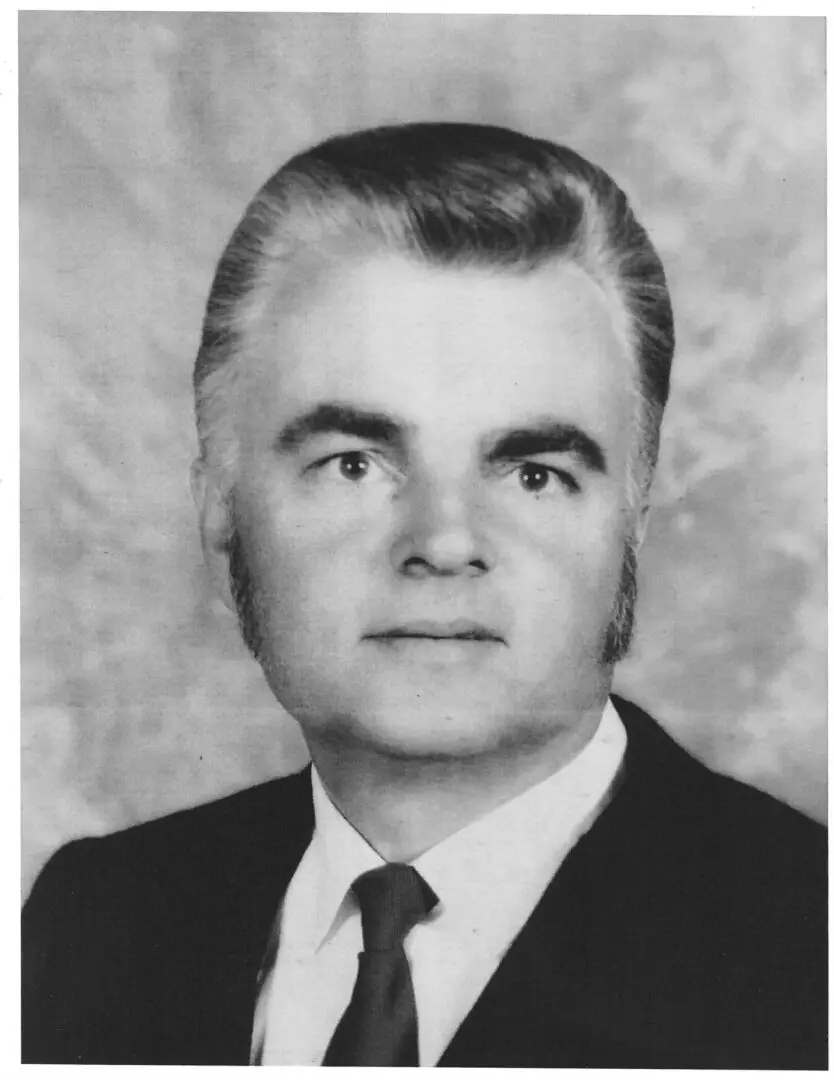
Jack Ewell
Jack Ewell, *The Silver Fox”, was a typical Southern California youngster, growing up in a world of car clubs, local drive-ins, street racing, etc. as an avid enthusiast himself. He started his driving in a series of flathead Ford powered street roadsters. They weren’t always the fastest, but they provided him a map to learn a lot about how to improve performance by working on them. In 1948, Jack joined the famed Rod Riders car club out of San Pedro, CA and began competing at the Dry Lakes events where in 1949 he posted his first official speed of 105 MPH.
In 1961, at the age of 33 Jack became the first outside employee to work at Mickey Thompson Enterprises in sales and from there, moved up to become Sales Manager. This position had many lasting benefits for Jack, he was used to being exposed to the latest and best equipment available, he spoke with about every racer customer about what they were doing, he was able to trade information with both racers and manufacturers which helped him compete with good equipment.
Jack began his true driving/racing career in 1950 at the first legal drag strip opened in Santa Ana, CA. His ride was a 1928 Model A Ford Sedan with a fuel burning flathead for power in which he posted the first Top Eliminator win in organized drag racing. In 1953 he installed his Arden-Merc engine in a Bean Bandit built chassis and became the first member of the Drag Racing 140 mph club.
In 1957 Jack took over driving chores of the Ewell & Stecker AA/Fuel dragster moving to Jim Kamboor’s Jado Special AA/Fuel Dragster in 1958. By 1962 he was part of the Ewell-Cagle-Kamboor team as part owner and driver. A new team, Ewell-Bell & Stecker, was put together for the 1966 season with a completely new Woody Gilmore car.
1961 also found Jack on the Bonneville Salt Flats where he gained admittance into the exclusive (at that time) Bonneville 200 MPH Club after posting a run of 217 MPH one way and a two-way average of 212 MPH in the Chrysler powered stock bodied 1953 Studebaker of Duncan and Allen. As part of his success that year, Jack took the Top Eliminator crown at the prestigious Bakersfield, CA, U.S. Fuel and Gas Championship meet.
Jack had the misfortune to break a leg in mid-1968 with the driver’s seat being turned over to Carl Olson. Bill Stecker had decided to quit racing at that time, so Carl put together a deal with Jack and Jim Bell to become a partner in the car as well as the driver. The team was so successful that in 1969 they fielded a new Woody Gilmore AA/Fuel Dragster with a late model, supercharged 426 Chrysler hemi for power. A tribute to the success of this team/car is on display the SEMA office in Diamond Bar, CA where the car actually hangs on the wall of the offices main entrance.
Jack was the first president of the original Drag, Racer, Inc. (DRI), a Southern California group that was among the first to offer cash awards to event winning racers. Jack’s hair prematurely turned silver in color early in his career prompting the then, “Voice of Drag Racing”, John Lindbergh, to dub him with the nickname *Silver Fox.
As involved with the sport as he was, one of Jack’s ongoing passions was for safety. He was one of the original Board of Directors for the United Drag Racers Association (UDRA) and received its first award for the “Most Contribution for Safety”.
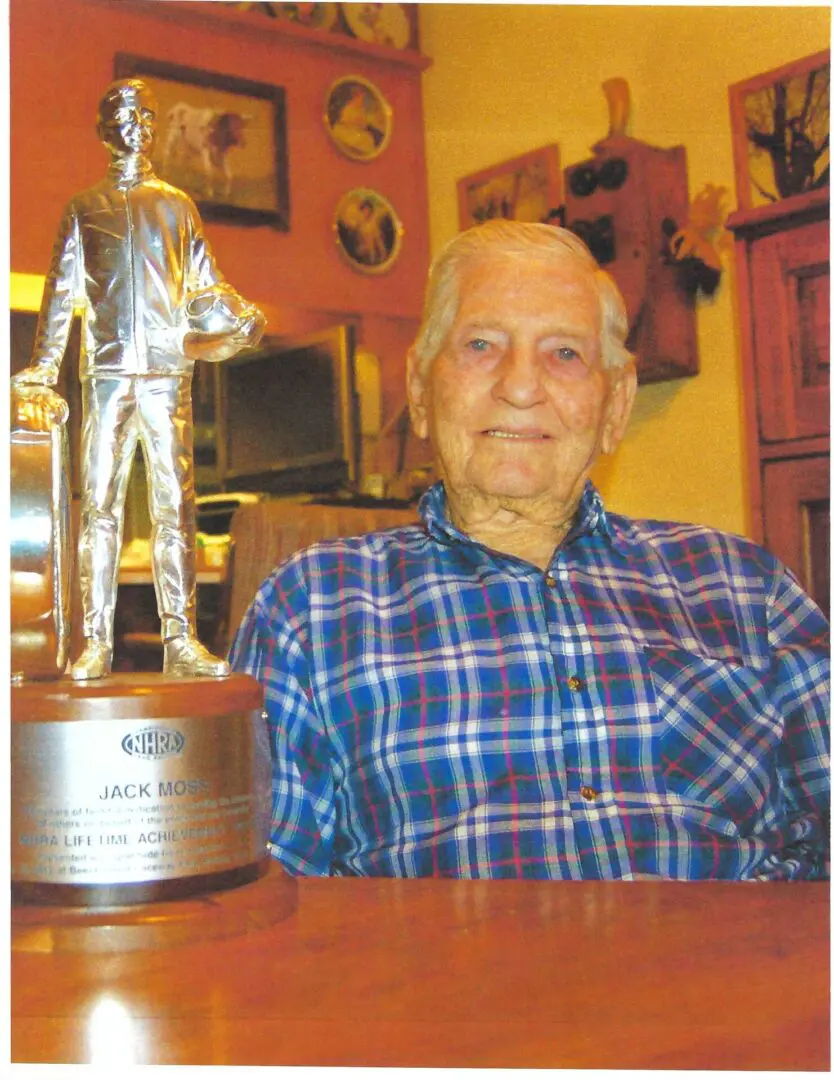
Jack Moss
The late Jack Moss from Amarillo, Texas enjoyed a lengthy racing career that began in the formative days of hot rodding prior to World War II. In today’s world, Jack was a very unique person. Before he began the racing portion of his career, he had to endure the challenges of being a Japanese Prisoner of war for 3 ½ years. He joined the Texas National Guard in 1940 at the age of 16, was called to active duty after Pearl Harbor, and was taken prisoner by the Japanese on January 11, 1942, and was forced to work on the “Death Railway” on such projects as the Bridge over the River Kwai. During the 42-month period, 57% of his unit, known as the “Lost Battalion” were lost. When he was released at the end of the war in 1946, Jack vowed to live life to the fullest.
After his honorable discharge, Jack married his wife, Nellie, raised a family of two sons and a daughter and proceeded to do his best to live up to his vow.
He started his own business in 1948, Moss Automotive, applying his military training, his love of cars and motorcycles and began building a very successful business. When Jack made a casual comment to a friend that he should take his modified stocker to the drags to see what it would do, his friend told him not to even bother so Jack immediately prepared it, took it to the track and began winning racing trophies at Texas Speedway in Amarillo, TX and the surrounding area tracks.
Not content to be a local racer, Jack also applied his talents to the Bonneville Salt Flats, midgets, sprint cars and super modified stock cars. His first dragster effort was his famous “Ramblin Ram” streamliner dragster with a supercharged small block Chevrolet engine for power with which in 1950 he smashed the existing Nebraska state class record of 130 MPH with a speed of 149.5 MPH. Jack built over 30 cars in his lifetime including his own twin small block Chevrolet powered “Too Much” with which he managed to put most of his competition on the trailer.
Between 1970 and 1983, Jack also raced off-road Enduro motorcycles, winning his State of Texas class three years in a row and posting his final Enduro award in 1982 at the age of 60. In 1978, Jack closed the doors on Moss Automotive and retired.
In addition to running Moss Automotive, building and racing his many vehicles and helping raise a family, Jack helped organize and taught at the Auto Mechanics Department at Amarillo College. At the 2012 NHRA Hot Rod Reunion in Bowling Green, KY, Jack was presented with NHRA’s Lifetime Achievement Award (The Wally Trophy).
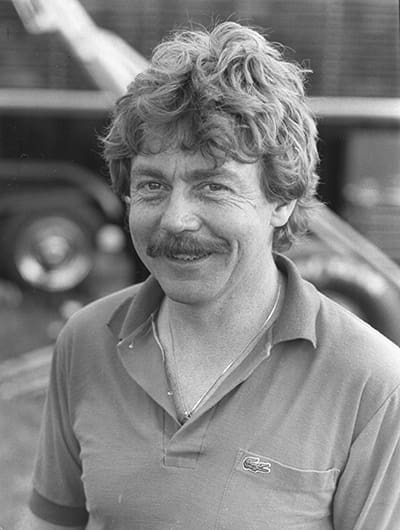
Graeme Cowin
Graeme Cowin began his racing career in the early 1960’s with a 292 Ford Y Block powered Fiat Topolino. Before long the need to go faster caused him to replace the Ford with a supercharged Chevrolet coupe. In 1973 he replaced the Chevrolet with a supercharged Chrysler powered altered roadster on nitro and began his “nitro” career.
Graeme’s first outing with a AA/Fuel Funny Car came in 1973 and was followed by a string of nitro fueled altered and funny cars all entered under the name Psycho. While he was based in Australia, Graeme competed in the Funny Car circuits of both IHRA and NHRA in 1985 and finished as runner up at the 1987 NHRA Winternationals in Pomona, CA.
In 1988, with Funny Cars losing some of their popularity in Australia, Graeme switched over to racing a supercharged Chrysler powered AA/Fuel Dragster and in 1993 became the first Australian to run under five seconds when he posted a time of 294.43 mph and 4.89 ET. After a string of wins at various racetracks, Graeme won the Australian Top Fuel Championship in 1995 and has continued to be a serious competitor over the years.
Using his involvement in the sport as a template, Graeme opened the doors to his first speed shop in 1980 under the title Rocket Industries and in 1993 he created the Outlaw Nitro Funny Car Series that became a huge success in Australia and the Rocket Allstar Series that gives non-professional category racers an opportunity to earn reward points for substantial prizes.
Graeme was inducted into the Australian National Drag Racing Association Hall of Fame in 2013 and the Australian Motorsports Hall of Fame in 2018. Graeme is not backing away from his involvement in racing and will be fielding another AA/Fuel Dragster with him as crew chief and his son Andrew doing the driving.

Pat Blates
Pat went to her first drag race at age 15. It was love at first sight. The people, the noise, the cars, it was all awesome. She met Dan Weis, track owner, and badgered him until he agreed to let her work at the track-that way she-could go every week. She started in the concession stand, which at that track faced the drag strip and she could work and watch at the same time. When Dan built the track in Richmond, Va. she graduated to working in the tower. Then, at age 22, Dan brought this tall, good looking guy into the tower and introduced him to Pat. They remained together from that day to today. Jerry was a drag race champion and at the time was driving the Bud & Don's Guzler car out of Chicago. They moved to Chicago and lived there until there was a bad crash with the car and Jerry gave up driving.
They moved to San Diego, Jerry's hometown, and lived there for six months and one earthquake. Jerry introduced Pat to most of his drag racing friends in San Diego and she discovered what a great group of people they were. After that earthquake, Pat no longer wanted to live in San Diego so they moved to Pat's hometown of Richmond, VA. They started a truck washing business and reconnected with Dan Weis and his family. In the early 70's they decided to field a funny car with their business partner, Tom. thus the name "Tom & Jerry" for the car. They put Harlan Thompson in the seat and hired Bob Mayer as the tuner. They then decided to field a second funny car, the "Tom & Jerry Nitemayer" with Bob in the seat. This lasted three years and when it became too costly they shut down the operation.
They continued to follow drag racing and attend as many events as they could. They were at the Gator Nationals in 1991 when Don Garlits gave them two tickets to the Inaugural International Drag Racing Hall of Fame banquet. They have attended every one of these events since then and in 1992 became a table sponsor and in 2004 additionally became the trophy sponsor. This allowed them to give something back to the sport they both love.
After attending the first CHRR in Bakersfield they realized what a great event it was to catch up with old friends. They started a search for the original car and after a few years finally gave up. Then in 2003 the first NHRR in Bowling Green, Ky. took place. They ran into Rod Peppmuller at that event and since he had built the original asked if he would be interested in building a replica of the car. Theyfinally convinced him and debuted the car at the 2005 NHRR. It was at this event They caught up with Eileen Daniels and spent a lot of time talking with her. At the end of the event she asked if Pat would be interested in helping he·r at the ·next event.
Pat worked with Eileen at the reunions and the nostalgia displays at national events through 2018. Pat helped with the autograph sessions, and made sure all the "Old Guys" had whatever they needed to make sure they enjoyed the event. Pat said the best part of working at the reunions was getting to meet and get to know a lot of the racers she had only seen go down the track.
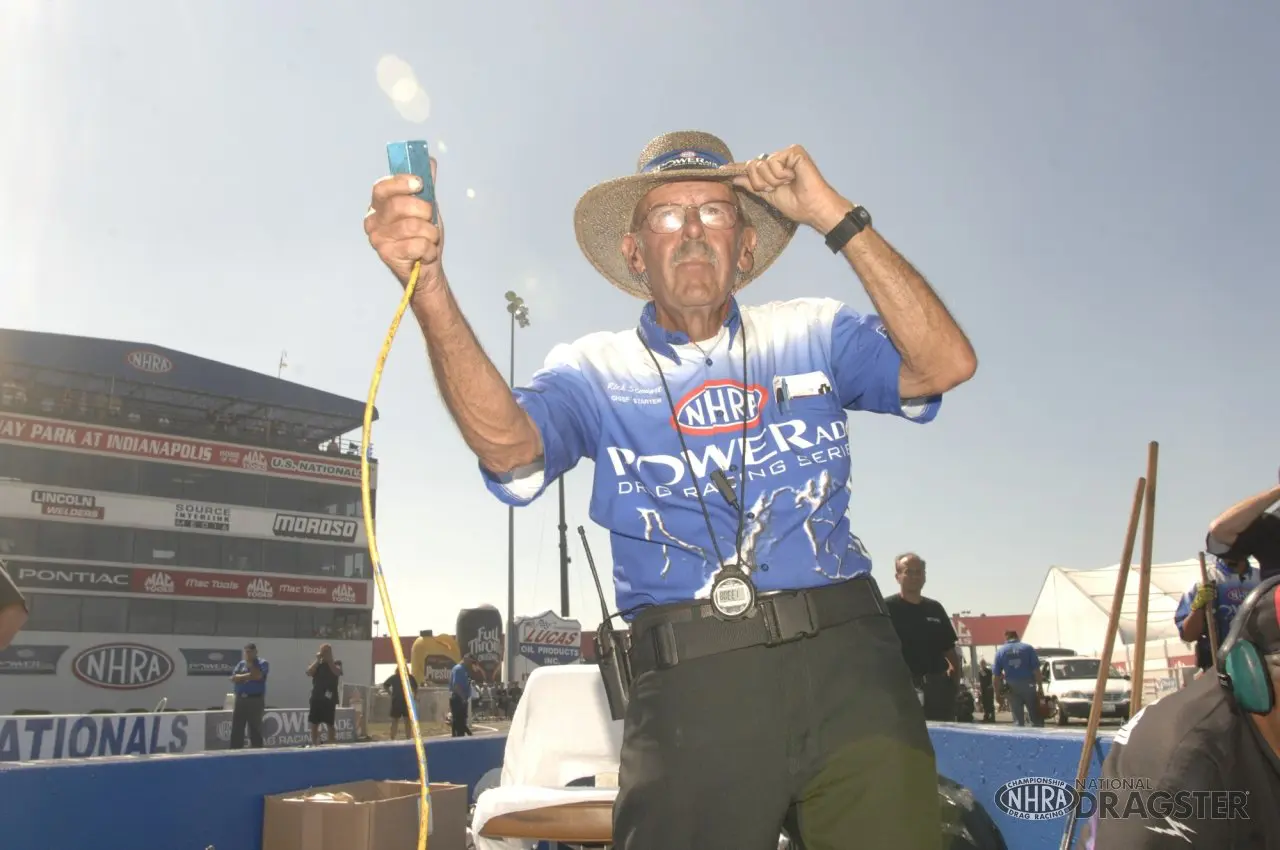
Rick Stewart
Rick Stewart was a typical young man growing up in the Bakersfield area of Southern California. His first car was a 1946 Ford Coupe with a flathead V-8 under the hood and like most of his peers, his first racing experience was on the streets of Bakersfield.
1958 was Rick’s change over year, going from street racing to his first trip down the infamous Formosa drag strip in his flathead V-8 powered ‘46 Ford Coupe. This experience soon led him to the ‘big time’ and in 1961 he slid into the seat of Gene Adams Supercharged Chrysler powered AA/Fuel dragster and an even greater love of the sport. However, this ride ended for Rick when a sever engine explosion led to the car leaving the racetrack and being destroyed.
In 1962 Rick took over driving chores for the Adams, Warner & Stewart in their supercharged Chrysler powered AA/Fuel dragster on nitro. Unfortunately, this ride experienced the same engine failure, but the resulting crash was so spectacular that it was recreated in the documentary movie, Seven Second Love Affair.
After recovering from his injuries suffered in that crash, in 1963 Rick joined forces with Gene Adams and John Rasmussen to successfully campaign another AA/Fuel Dragster. At one point in time, Rick was able to become part of the highly touted Dick Clark American Bandstand race “experience” with some impressive performances. Unfortunately, the past was repeated in this car when he made his last run down the track, and another sever engine explosion occurred. This time when Rick pulled the chute, the chassis came apart and he completed the run with just the seat staying with him for the rest of the run. In 1971 Rick announced his retirement from driving and went back to his regular job as an X-Ray technician.
Still loving the sport, in 1965 Rick became the backup starter for NHRA and in 1996, when Buster Couch retired, he accepted the job as NHRA’s official, full-time starter. This is a position he held until his own retirement at the end of the 2011 racing season.
Rick still enjoys the sport but now as a spectator. However, Rick notched a respectable success record posting wins at the various Southern California tracks.
Rich was named the Grand Marshal for the 2021 NHRA Hot Rod Reunion.
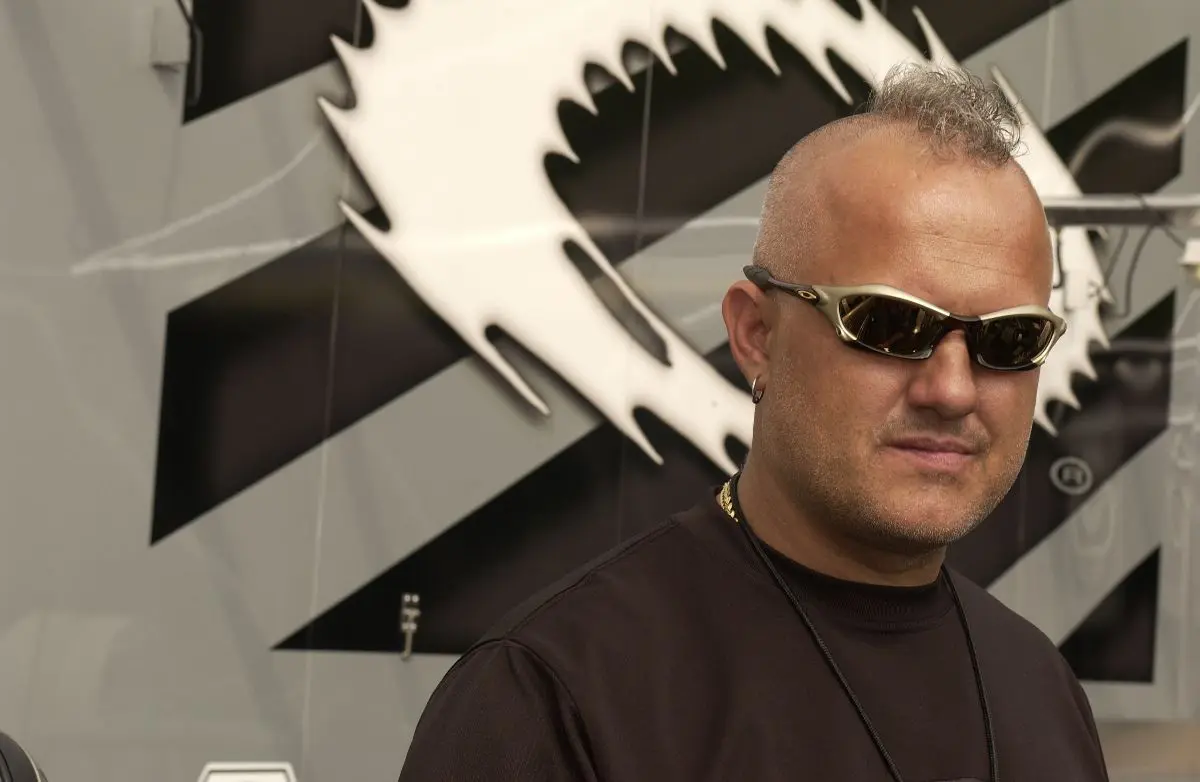
Scotty Cannon
Scotty Cannon began his education into racing and performance enhancement before he even had a car. He was at the races every chance he had and paid attention to what was happening. One night he watched a particular Camaro try to run but that broke an axle every time it ran. When it broke again, he overheard another spectator say the owner needed to use aftermarket axles to stop this. That statement never left Scotty’s mind.
In 1979 when he was finally able to buy his first race car, a 1967 Pontiac Trans Am, one of the first things he did was install an aftermarket camshaft. The result was an instant increase in performance and a lesson learned.
By the 1985 season, Scotty was able to win enough to keep his dream of racing alive. In 1987, he replaced the Trans Am with a 1941 Willys Coupe that had a Top Fuel wing sticking out the back and a nitrous-injected 615-inch Chevy under the hood. During his career, Scotty has used every form of power adder available. He has fielded engines equipped with nitrous oxide and carburetors, supercharger, and even once a turbocharger.
A turning point in Scotty’s career came in 1989 when finally qualified for an IHRA Top Sportsman Quick 8, and then proceeded to win not only the heads-up race on Saturday night, but also the 32-car 200 mph bracket racing field on Sunday. Cannon supplemented his racing with a modest sponsorship from OnSat Satellit Magazine and over 75 match race dates a year.
IHRA introduced Pro Mod class in 1990 at its Darlington, SC Nationals and in 1991, Scotty posted his first IHRA Nationals win at Bristol Dragway in Bristol, TN. By the end of the 1991 season, Scotty took home his first IHRA World Championship title which he did again in ‘92 ’93 and ’94. He missed taking the title in ’95 but made it number 5 in ’96. He added his sixth and final one in 1998 before heading NHRA Funny car racing. Scotty returned to the Pro Mod wars in 2007 with his son, Scott doing the driving and the team captured its sixth IHRA World Championship title.
In 1998 Scotty received a sponsorship offer from Oakley Sunglasses to field a AA/Fuel Funny Car. He had always been fascinated by this class so in 1999 he entered the NHRA Funny Car world in a ’99 Pontiac Firebird bodied car and garnered the NHRA Rookie of the Year title.
During his IHRA Pro Mod reign, Cannon scored 28 victories, a mark that was never topped when the race series ceased running professional drag racing. In 2010, Competition Plus Magazine named him Pro Mod driver of all time, in 2019 he was inducted into the North Carolina Drag Racing Hall of Fame and in 2021 into the IHRA Hall of Fame. He even made a trip Down Under to Australia where he won the series title in a 1953 Studebaker, and then brought the car back to the USA to complete a championship sweep on two continents. No other Pro Modified driver had done this before.
When questioned about his success, he stated it was all about working harder than his competitors. There were years when he competed in as many as 75 races with no season limits.
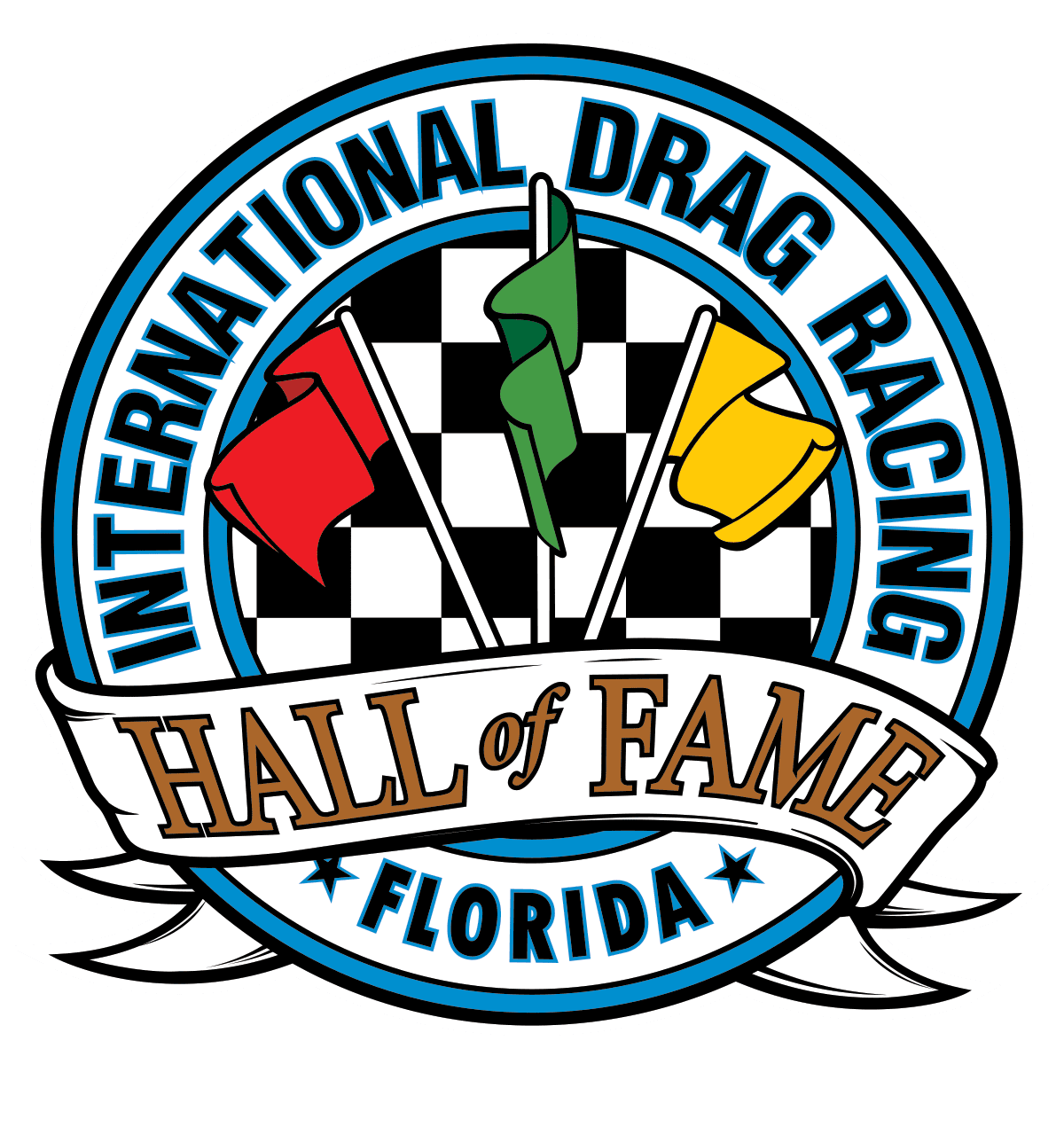
Stu Bradbury
Few personalities in British drag racing are as well-known and respected as Stu Bradbury. For years he served as Chief Starter at Santa Pod Raceway and subsequently became Founding Chairman of the British Drag Racing Hall of Fame, which has since achieved international acclaim. He discovered drag racing in 1964, not at one of Sydney Allard’s International Drag Festival events, but at a famous stately home, Woburn Abbey. Performing in a pop group at a function there, he stumbled across a display organized by the British Hot Rod Association (BHRA), then a sparse group of enthusiasts with a dream of organized drag racing in the UK. The hot rods and dragsters on display struck a cord with Stu and he joined the club a move that was the beginning of a love affair with drag racing that has lasted over fifty years.
In 1965, Stu and his parents provided accommodation to BHRA club chairman, John Bennett while a permanent drag strip was being developed at Podington aerodrome, a disused wartime base located near Stu’s Wellingborough home. Stu himself actually lent a physical hand in building Europe’s first permanent drag racing venue, Santa Pod Raceway.
Stu spent many non-race weekends digging, painting and other wise helping with its building and Santa Pod Raceway opened its doors in 1966. Stu’s first race day job was crowd control. The following year he was promoted to Deputy Starter and then Chief Starter in 1968. Stu encountered his first American racer when the American Commandos’ team visited Santa Pod in 1966 with Scandinavian, Dutch and even South African entrants following soon. Stu controlled the starting line when Don Schumacher and Paula Murphy brought over their Funny Cars in 1973 and when Don Garlits made his historic appearances in 1976 and 1977. He was also the main man when other American racers such as Tony Nancy, Raymond Beadle and Don Prudhomme made their appearances.
Stu also spent time in America learning more about how the sport was promoted here, even spending time on the starting line at some NHRA events with Buster Couch teaching him some tricks. Stu quit as Chief Starter in 1990 to join with John Woolfe Racing in an attempt to develop Long Marton Airfield into an NHRA sanctioned track. While local planners thwarted the full plans, the track is there today as Shakespeare County Raceway. Stu also joined UK parts supplier, US Automotive, on its launch and assisted Top Fuel Dragster star Andy Carter build his team.
In 2005, Stu and several colleagues founded the British Drag Racing Hall of Fame which has been his chief focus since its founding. He was also a prime mover behind the restoration of Sydney Allard’s 1961 Allard Chrysler, and he continued to lend support to Santa Pod’s Dragstalgia events, now Europe’s premier nostalgia drag racing event
In 1971, Stu was inducted into the British Drag Racing Hall of Fame.
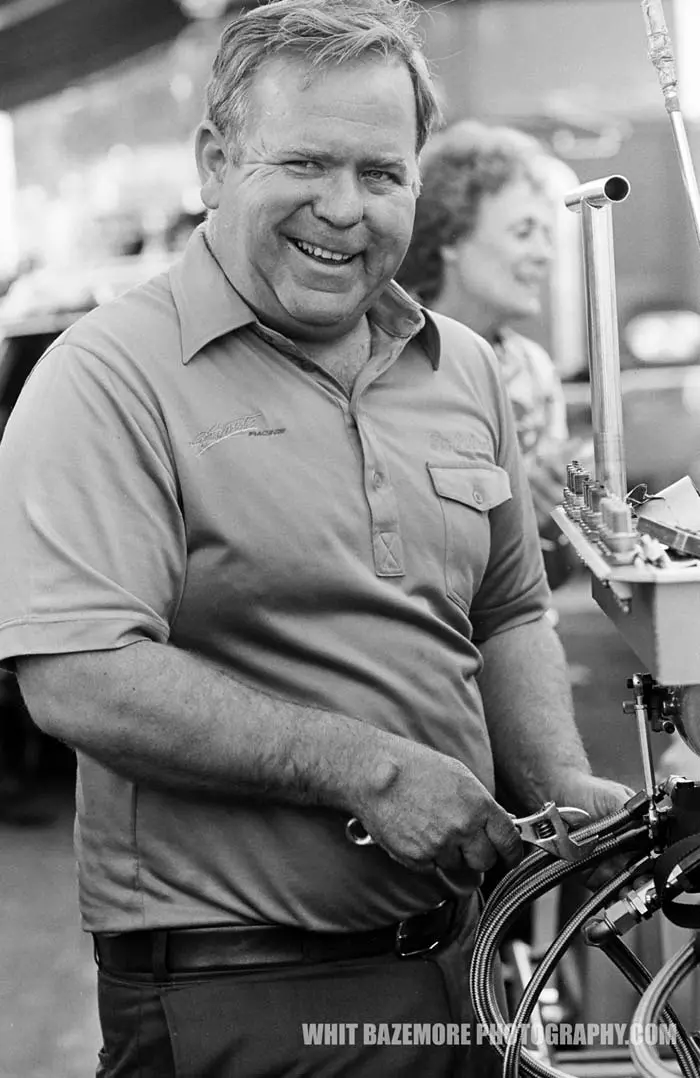
Stu Bradbury
Few personalities in British drag racing are as well-known and respected as Stu Bradbury. For years he served as Chief Starter at Santa Pod Raceway and subsequently became Founding Chairman of the British Drag Racing Hall of Fame, which has since achieved international acclaim. He discovered drag racing in 1964, not at one of Sydney Allard’s International Drag Festival events, but at a famous stately home, Woburn Abbey. Performing in a pop group at a function there, he stumbled across a display organized by the British Hot Rod Association (BHRA), then a sparse group of enthusiasts with a dream of organized drag racing in the UK. The hot rods and dragsters on display struck a cord with Stu and he joined the club a move that was the beginning of a love affair with drag racing that has lasted over fifty years.
In 1965, Stu and his parents provided accommodation to BHRA club chairman, John Bennett while a permanent drag strip was being developed at Podington aerodrome, a disused wartime base located near Stu’s Wellingborough home. Stu himself actually lent a physical hand in building Europe’s first permanent drag racing venue, Santa Pod Raceway.
Stu spent many non-race weekends digging, painting and other wise helping with its building and Santa Pod Raceway opened its doors in 1966. Stu’s first race day job was crowd control. The following year he was promoted to Deputy Starter and then Chief Starter in 1968. Stu encountered his first American racer when the American Commandos’ team visited Santa Pod in 1966 with Scandinavian, Dutch and even South African entrants following soon. Stu controlled the starting line when Don Schumacher and Paula Murphy brought over their Funny Cars in 1973 and when Don Garlits made his historic appearances in 1976 and 1977. He was also the main man when other American racers such as Tony Nancy, Raymond Beadle and Don Prudhomme made their appearances.
Stu also spent time in America learning more about how the sport was promoted here, even spending time on the starting line at some NHRA events with Buster Couch teaching him some tricks. Stu quit as Chief Starter in 1990 to join with John Woolfe Racing in an attempt to develop Long Marton Airfield into an NHRA sanctioned track. While local planners thwarted the full plans, the track is there today as Shakespeare County Raceway. Stu also joined UK parts supplier, US Automotive, on its launch and assisted Top Fuel Dragster star Andy Carter build his team.
In 2005, Stu and several colleagues founded the British Drag Racing Hall of Fame which has been his chief focus since its founding. He was also a prime mover behind the restoration of Sydney Allard’s 1961 Allard Chrysler, and he continued to lend support to Santa Pod’s Dragstalgia events, now Europe’s premier nostalgia drag racing event
In 1971, Stu was inducted into the British Drag Racing Hall of Fame.
